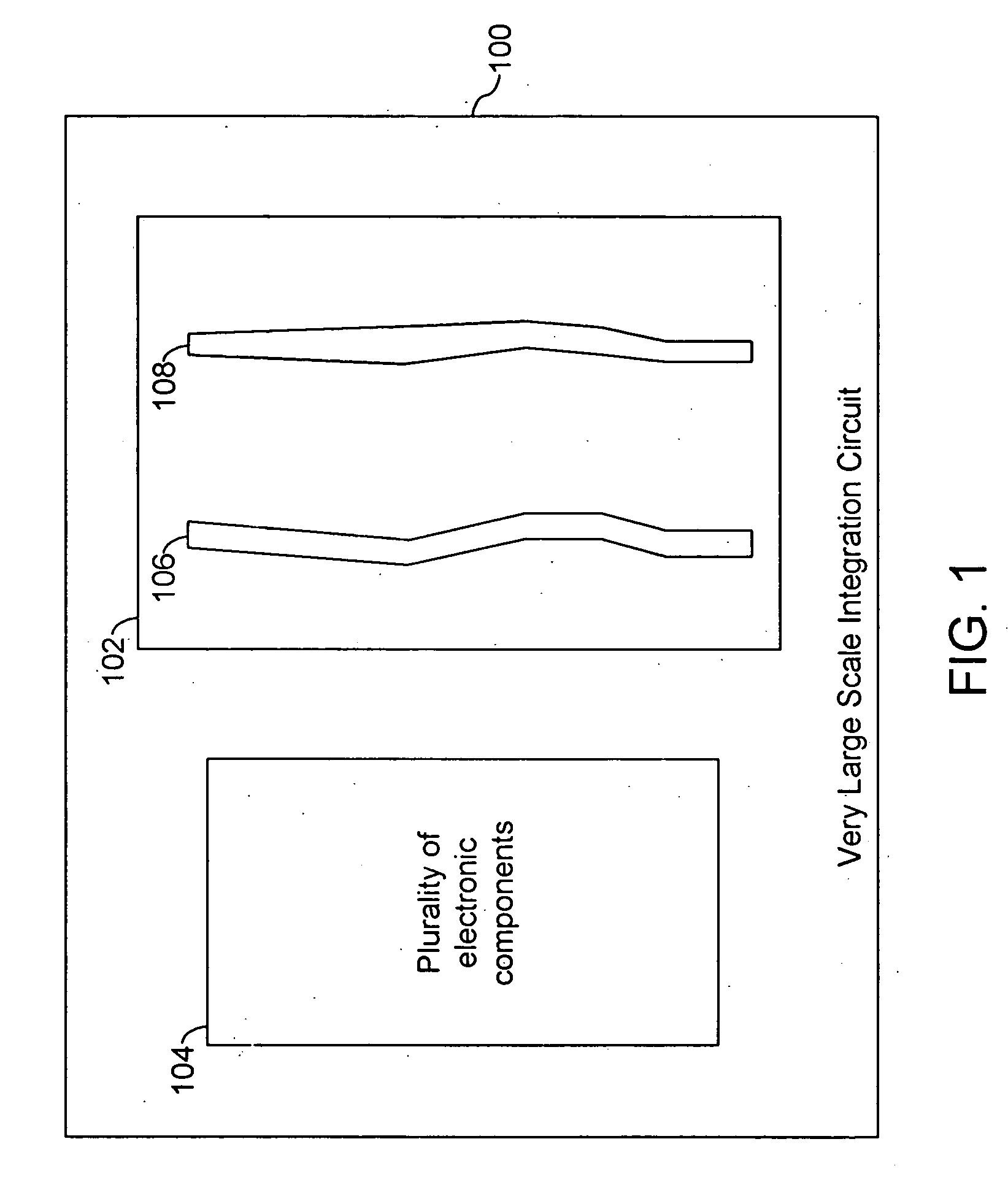Method and system for reshaping metal wires in VLSI design
a metal wire and design technology, applied in the field of very large scale integration (vlsi) circuits, can solve the problems of inability to handle metal wires obtained by conventional chip-level rc extractors, device speed of operation, line-end shortening, etc., and achieve the effect of reducing the time and effort required for rc extraction, facilitating and accelerating rc extraction
- Summary
- Abstract
- Description
- Claims
- Application Information
AI Technical Summary
Benefits of technology
Problems solved by technology
Method used
Image
Examples
Embodiment Construction
[0028] Various embodiments of the present invention provide a method and a system for reshaping metal wires during Very Large Scale Integration (VLSI) circuit design. A pair of metal wires obtained after Optical Proximity Correction (OPC) is considered at a time. The pair of metal wires is converted into a pair of electrically equivalent reshaped wires. It will be apparent to those skilled in the art that the reshaping is done in design space only. Representations of the metal wires are reshaped in accordance with various embodiments of the present invention. The modified shapes are then stored in a Geometry Database (GD). The modified shapes are then used for Resistance Capacitance (RC) extraction. RC extraction using the modified shapes is quicker and easier as the modified shapes have orthogonal vertices. The shape of the actual metal wires of a VLSI, remain as obtained after OPC.
[0029]FIG. 1 illustrates a Very Large Scale Integration (VLSI) circuit 100, in accordance with an em...
PUM
 Login to View More
Login to View More Abstract
Description
Claims
Application Information
 Login to View More
Login to View More - R&D
- Intellectual Property
- Life Sciences
- Materials
- Tech Scout
- Unparalleled Data Quality
- Higher Quality Content
- 60% Fewer Hallucinations
Browse by: Latest US Patents, China's latest patents, Technical Efficacy Thesaurus, Application Domain, Technology Topic, Popular Technical Reports.
© 2025 PatSnap. All rights reserved.Legal|Privacy policy|Modern Slavery Act Transparency Statement|Sitemap|About US| Contact US: help@patsnap.com



